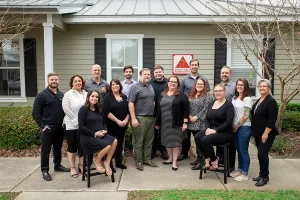Location, location, location; providing fairer pricing through more accurate data

This article was provided by AXA XL
Our clients are currently faced with evolving risk profiles because of the increased frequency and severity of extreme weather events, coupled with volatility in their property values at risk because of fluctuations in the cost of materials, among other factors. Mike Hood, head of pricing global property, and James Grimshaw, head of open market property London wholesale, at AXA XL, explain how they’re working to give clients a location-level picture of risk to more accurately price and transfer that exposure.
Our property clients are facing an evolving risk landscape. The threat of larger losses caused by more frequent and severe weather events, coupled with potential inaccuracies in their values at risk because of fluctuating costs for materials and supply-chain challenges, mean that it’s even more important for them to have an accurate idea of the cost of their exposures.
Find out more: Discover how AXA XL is leading with purpose in the UK & Lloyd’s market
The frequency and severity of weather-related losses have shown a marked increase in recent years. Last year was the fourth costliest on record for insured losses from natural catastrophes, according to analysis from Swiss Re.
As well as windstorms and wildfires in the United States and Asia, Europe was hit by severe flooding, which caused large insured – and uninsured – losses; according to the German Insurance Association, 2021 was the costliest year ever for natural catastrophes in Germany.
Our industry has a long track record of modelling and transferring catastrophe risk. But changing weather patterns resulting from climate change are impacting clients’ property exposures across multiple locations. A rise in the number of unexpected incidents, such as last December’s out-of-season tornados in the United States, are a stark warning that weather-related events are becoming more frequent and more difficult to predict.
Against this backdrop, macroeconomic trends are having a significant effect on the cost of raw materials and other goods. Various factors, including the ongoing effects of the COVID-19 pandemic and the conflict in Ukraine, have contributed to supply chain crunches and shortages of certain products. A recent report by McKinsey noted that the price of some raw materials is swinging upwards by as much as double digits.
And the UK-based Builders Merchants Federation recently noted that prices for some raw materials have increased by about 10% to 15% this year, while some others, such as lumber, have shot up in price by more than 100%. The lumber price in the US has reduced recently and is now up “only” 30% since pre-COVID.
The twin, and interlinked, challenges of increased weather-related risks and fluctuating costs for raw materials mean that it’s ever more important for our clients – and us – to have a good handle on values insured. With our clients becoming increasingly global in their operations, the number of assets in locations with greatly differing risk profiles has risen. No two buildings are the same in terms of their value or the potential perils to which they are exposed. And our pricing needs to reflect that.
Making models work
To be able to give our clients a better view of which locations and perils drive their expected loss costs – and impact premium – we’ve been working to develop models that can give a more accurate, per-location view of risk and, therefore, price of that risk.
One of the first steps we undertook to reach this goal was to develop an application to cleanse, convert and capture the data we receive from thousands of non-standardised spreadsheets defining items at risk. The app cleans and converts location data and captures policy terms and conditions, and aligns them with the location information, which is used in our stochastic catastrophe modelling to evaluate risk and pricing.
This not only increases efficiency; it improves the quality of the data, which then results in generating higher-quality and more consistent risk assessments far more economically than performing site visits. In addition, our risk consultants’ new App “Risk Scanning” can give this information without the need for an engineer to physically visit and assess a location.
For example, to gain location-level pricing of flood risk, we’re able to assess data on criteria like water depth, flood protection, building height, building occupancy and so on. With risks like flood, a location positioning error of a mere 10 metres in one direction or another can make a huge difference in terms of expected loss.
This model gives us more detailed location-risk information, which enables us to assess and price that risk much more accurately. This precision of geocoding is difficult to achieve when a client has 1000 sites in 50 different countries around the world. Some countries have better address systems than others. We are investing in new technology, which will soon elevate the accuracy of our cat modelling and pricing to the next level and enable our Risk Consultants to improve their flood advice to clients.
We also use catastrophe modelling outputs to feed into our new global pricing tool which, combined with location level fire risk data from engineers gives us account location-level pricing information for every peril. This enables us to quickly gain an understanding of the perils and locations that are driving loss cost for our clients. Fire rates in the new tool have been recalibrated based on more than $100 billion-worth of claims data from the past 10 years, together with approximately $150 trillion dollars-worth of detailed location-specific exposure data from across the same time period.
Our clients are grappling with the challenges of changing risk profiles caused in part by climate change, and the macroeconomic and supply-chain factors that are – in some cases drastically – changing their values at risk. Our ability to give this more accurate information on location exposures and price is helping them to better assess, mitigate and manage these evolving risks.
The new global pricing tool (Harta) also enables us to reduce pricing volatility. By being less reactive to loss events and instead modelling price based upon detailed risk information, we’re able to give our clients a more stable sense of their cost of risk – ahead of any events. This forms an important part of our ambition to be longer-term partners to our clients, not simply payers of claims.
Find out more: Discover how AXA XL is leading with purpose in the UK & Lloyd’s market





